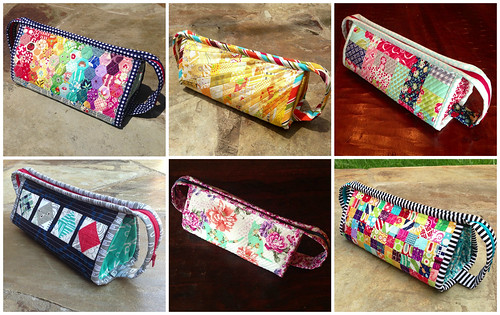
I have had several people ask me about how I construct the Sew Together Bags I make, particularly the binding method I use. I'll post a bit about how to hand bind around the zipper, and a few pics of the bags I have made to date.
My preference for interfacing bags is Pellon SF101 Shape-Flex. It fuses nicely and keeps the fabric soft and pliable. I have added interfacing to the back of the main panel twice, once to help stabilize hand pieced hexagons, and once to quick piece tiny patchwork squares. On those panels I used Pellon 906F fusible sheerweight interfacing to keep them from getting too bulky.
Each bag I have made to date has been quilted. I used fusible fleece behind the floral kitty bag, and I was not happy with how the shape warped when it was quilted. In the future I will stick to using quilt batting unless I leave the exterior unquilted.
I like to hand bind the bags with a ladder stitch for a cleaner look. It does take a bit longer, but it is so worth it. The only tricky piece to bind is the free zipper portion if you are using a thread color that does not match the zipper tape, because the stitches can be visible on the top of the zipper tape. To remedy this, I fold the binding to the underside, just over the stitching line, and rather than sewing through the folded edge of the binding, I grab some fabric just to the underside of the fold. When I take the stitch into the zipper tape, I make sure to sew behind the stitching line where the zipper tape is covered by the top side of the binding. It is a bit confusing to explain, but hopefully this pic will help:
And now on to the retrospective pics.
My first bag I made for myself using 1" HSTs.
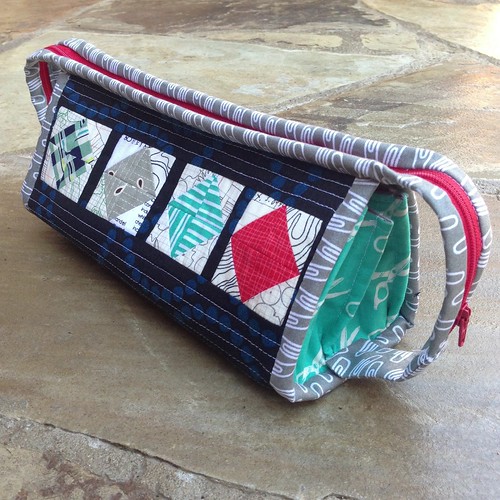
My bag gets heavy use and has been covered in coffee and tea (I am glad I opted to use a dark background fabric!)
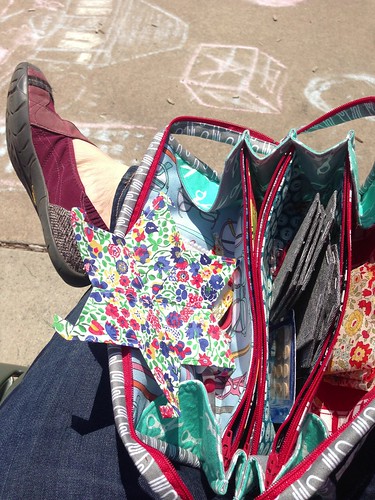
Not all of my bags have been used for sewing; my daughter uses her Bonnie and Camille QAYG bag for makeup.
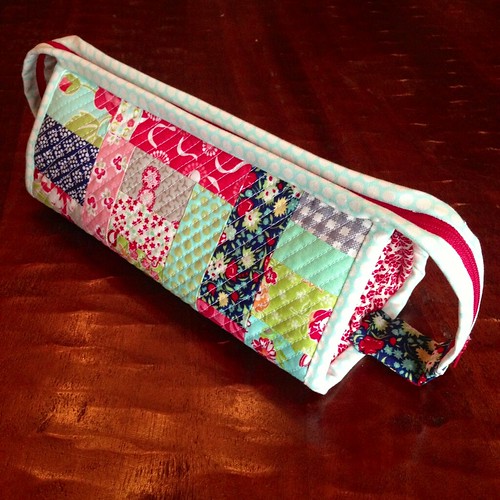
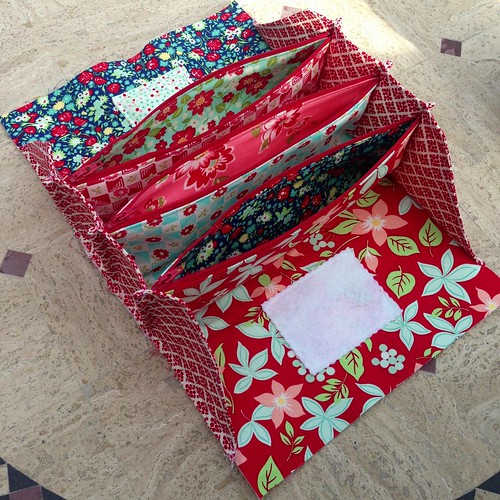
One of my all time favorite creations was a rainbow hexie bag I made for my friend Gwen. I love everything about this bag, including the interior.



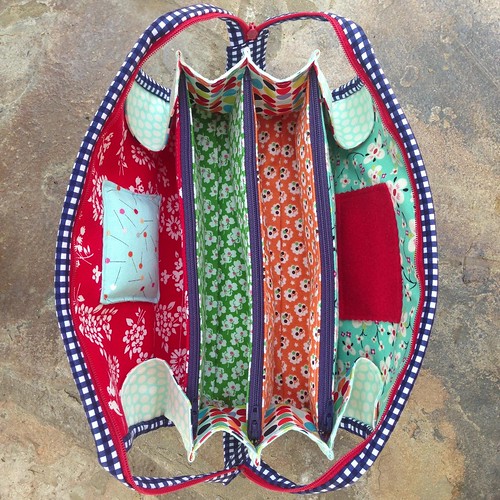
I made a glorious yellow bag for my friend Inder of Inder Loves Folk Art. We share a love of gold, mustard, and groovy things in general. I drafted a panel in EQ7 to paper piece sunbeams and I am in love with the result. It is so very Inder. A very big thanks to my friend Gwen who sent me yellow scraps so I could have a large variety.
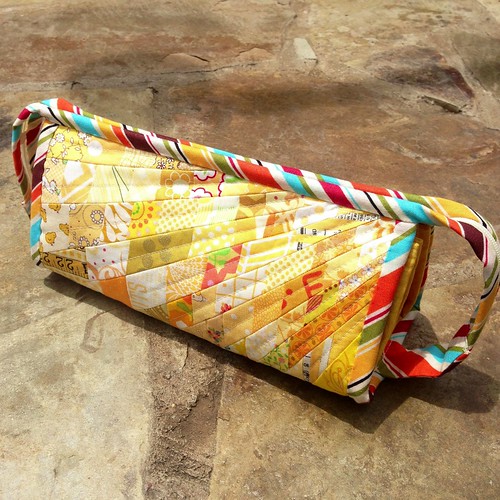
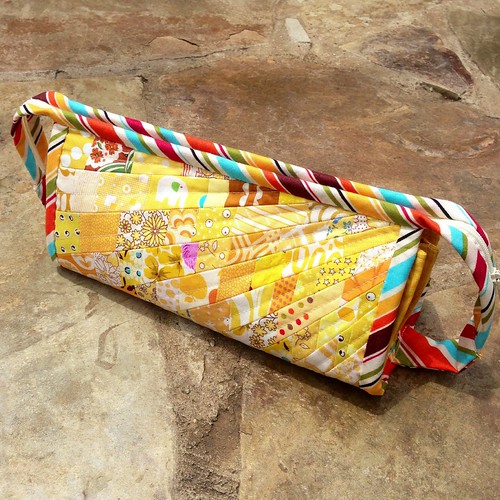
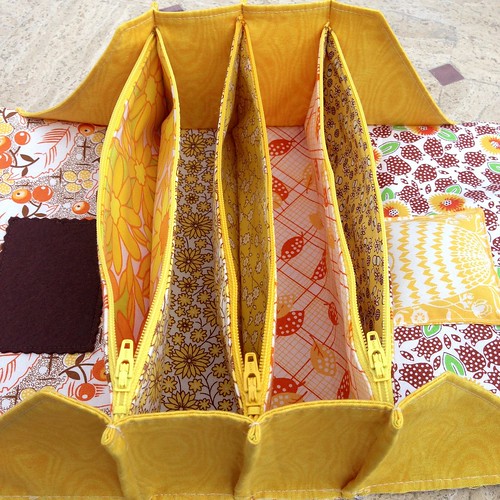
The most basic bag I have made is the floral kitties bag for a dear friend. She picked the fabric and the layout. These kitties are so cute!

Cotton + Steel Sew Together bag with August gazelles exterior
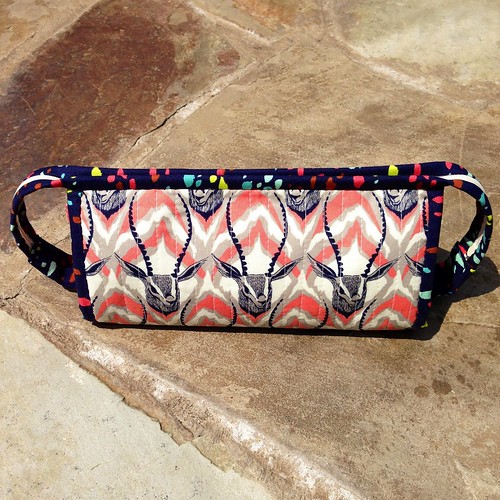
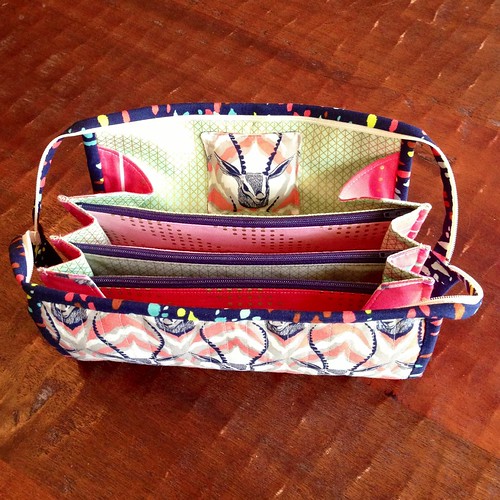
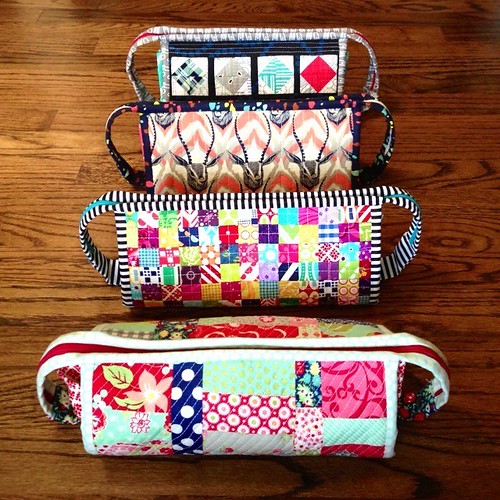








.jpg)







